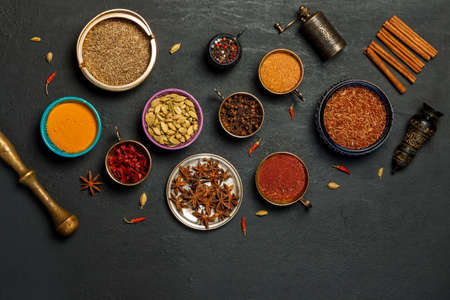Understanding Rashi Parivartan: Cosmic Rhythms and Well-being
In the heart of Vedic wisdom, the concept of Rashi Parivartan—the transition of planets through zodiac signs—holds a sacred place. This cosmic shift is more than an astronomical event; it is a spiritual phenomenon that intricately weaves together the energies of the universe with our daily existence. Within the Indian tradition, every planetary movement is believed to influence not only our mind and emotions but also the very rhythm of nature around us. As each planet enters a new rashi (zodiac sign), subtle changes in prakriti—our inherent constitution—and ritucharya—seasonal routines—are set into motion.
Embracing the teachings of Ayurveda, these transitions serve as gentle reminders from the cosmos to realign our lifestyles, habits, and diets according to the prevailing energies. By tuning into these celestial cycles, we can harness their power to restore balance and vitality within ourselves. This ancient synergy between Jyotish (Vedic astrology) and Ayurveda guides us to live in harmony with both our inner nature and the shifting seasons, ultimately nurturing holistic well-being that resonates on physical, mental, and spiritual planes.
Let us journey deeper into how Rashi Parivartan acts as a guiding force, inspiring mindful choices that honour India’s timeless connection between body, mind, spirit, and the cosmos itself.
Ayurvedic Dinacharya: Daily Rituals for Balance
As the celestial cycle ushers in Rashi Parivartan, embracing traditional Ayurvedic Dinacharya becomes essential for maintaining harmony within mind, body, and spirit. The ancient seers of Bharat have always emphasized the importance of a daily routine that aligns with nature’s rhythm to keep our doshas balanced, especially during periods of astrological transition. Here are some time-honoured practices to incorporate into your day:
Essential Dinacharya Practices During Rashi Parivartan
| Practice | Description | Benefits for Dosha Balance |
|---|---|---|
| Abhyanga (Oil Massage) | Self-massage with warm oil, traditionally using sesame or coconut oil as per your prakriti. | Nourishes the skin, calms Vata, supports circulation, and relieves stress. |
| Pranayama | Yogic breathing exercises such as Nadi Shodhana (alternate nostril breathing) or Kapalabhati. | Regulates prana flow, stabilises emotions, balances Pitta, and uplifts mood. |
| Tongue Scraping (Jihva Nirlekhan) | Gentle scraping of the tongue with a copper or stainless steel scraper every morning. | Removes ama (toxins), enhances taste perception, and stimulates digestive fire (agni). |
How to Integrate These Rituals in Your Routine
Begin your day before sunrise with a mindful awakening. After rinsing your mouth and scraping your tongue, dedicate a few minutes to gentle Abhyanga followed by a short Pranayama session. This simple yet powerful sequence anchors you amidst the energetic shifts brought by Rashi Parivartan. Consistency is key—these rituals ground your energies, helping you adapt smoothly as your rashi moves through different cosmic influences.
Cultural Insight
Across India, these practices are lovingly passed down through generations—from grandmothers massaging children with herbal oils on chilly mornings in Punjab, to yogis practicing Pranayama at dawn on the ghats of Varanasi. By honouring this heritage during Rashi Parivartan, you not only balance your doshas but also reconnect with the timeless wisdom of Ayurveda—a true gift from our ancestors to modern Bharat.

3. Seasonal Diet Wisdom: Sattvic Food Choices
As the Rashi Parivartan ushers in each new season, Ayurveda emphasises the importance of adapting our diet to maintain harmony between body and mind. Following time-honoured sattvic principles, seasonal shifts are best managed by choosing foods that are fresh, light, and energetically pure.
Sattvic Foods for Mind-Body Balance
Sattvic food is considered the purest diet in Ayurveda, promoting clarity, calmness, and vitality. During Rashi Parivartan, favour ingredients such as fresh fruits (like pomegranates and guavas), green leafy vegetables, whole grains, regional millets (such as jowar, bajra, and ragi), moong dal, fresh cows milk, ghee, honey, and nuts. These foods help nurture Ojas—the vital energy that sustains immunity and inner strength.
Spices to Support Agni (Digestive Fire)
Each season brings its own agni-balancing spices. In summer months, cooling spices like coriander, fennel seeds, and mint can pacify excess heat. Monsoon requires digestive boosters like ginger, black pepper, ajwain (carom seeds), and turmeric to ward off sluggish digestion and infections. Winter calls for warming spices—cinnamon, clove, cumin—that kindle agni and support immunity.
Regional Grains & Millets: The Indian Superfoods
Ayurveda celebrates regional grains for their adaptability to local climates. Include millets such as bajra in winter for warmth and energy; use ragi in monsoon for its calcium-rich properties; opt for jowar in hot months to keep the body cool. These ancient grains not only sustain health but also honour our Bharat’s agricultural heritage.
Simple Eating Rituals
To maximise sattvic benefits during Rashi Parivartan: eat with mindfulness; choose freshly cooked meals over processed foods; add a spoonful of desi ghee to your dal or roti; offer gratitude before eating—these small rituals infuse prana into every meal and help attune you with seasonal rhythms.
4. Herbs and Home Remedies: Ancient Tools for Resilience
In the heart of every Indian home, time-tested Ayurvedic herbs and nuskhe (remedies) have played a crucial role in maintaining health through shifting seasons, especially during Rashi Parivartan. As planetary transitions influence our prakriti (constitution), integrating classic Indian botanicals like Tulsi (Holy Basil), Ashwagandha, and Triphala can help balance doshas and strengthen immunity. These revered herbs are not just ancient; they are relevant allies for modern well-being.
Ayurvedic Herbs to Balance Your Body During Rashi Parivartan
| Herb | Main Benefits | Simple Usage Tips |
|---|---|---|
| Tulsi (Holy Basil) | Boosts immunity, relieves respiratory discomfort, calms the mind | Brew as herbal tea or chew fresh leaves daily at sunrise |
| Ashwagandha | Reduces stress, enhances stamina, supports hormonal balance | Mix ashwagandha powder with warm milk before bed |
| Triphala | Aids digestion, detoxifies, gently rejuvenates tissues | Take ½ teaspoon with lukewarm water at night |
Grandmother’s Kitchen Wisdom: Simple Home Remedies
India’s kitchen is a treasure trove of remedies passed down generations. During Rashi Parivartan, small changes using ingredients from your masala dabba can harmonize body rhythms:
- Haldi doodh (Turmeric milk): Mix a pinch of turmeric in warm milk to soothe inflammation and support immunity.
- Ajwain (Carom seeds) water: Boil ajwain in water for digestive comfort and relief from seasonal bloating.
- Ginger-honey concoction: Blend grated ginger with honey to ease throat irritation and boost resilience.
Sankalp (Intention) Matters
When preparing these remedies, set a sankalp—an intention for wellness—invoking gratitude to your ancestors and the healing power of nature. This subtle spiritual practice aligns your efforts with cosmic energy during Rashi Parivartan.
5. Mindfulness and Spiritual Practices: Embracing the Shifts
During Rashi Parivartan, when the planetary energies shift and usher in seasonal changes, aligning our inner world with these cosmic movements becomes essential for holistic well-being. Ayurveda, deeply rooted in Indian tradition, recognises that true health transcends the physical body—embracing the mind, spirit, and environment. This sacred transition is a powerful invitation to nurture mindfulness and spiritual practices, so we remain attuned to the subtle rhythms of nature.
Meditation: Cultivating Inner Stillness
Set aside time each day for meditation, especially during Brahma Muhurta (pre-dawn hours), when prana is pure and sattvic. Sitting quietly, focus on your breath or recite a simple mantra like “Om.” This practice calms vata dosha, grounds the mind, and creates a sense of clarity as you navigate the energetic shifts of Rashi Parivartan.
Chanting Mantras: Invoking Cosmic Harmony
Vedic wisdom teaches us that sound vibrations can harmonise both individual and universal consciousness. Chanting mantras specific to your rashi (zodiac sign) or invoking blessings from your Ishta Devata connects you with auspicious energies. Simple chants such as “Om Namah Shivaya” or “Gayatri Mantra” can purify the mind and invite positivity as the zodiac cycle renews.
Connecting with Nature: Grounding Your Energy
As per Ayurvedic tradition, spending time in nature—walking barefoot on grass (prithvi sparsha), observing sunrise or sunset, or tending to a tulsi plant—helps balance doshas and synchronise your inner rhythm with the cosmos. These acts not only foster gratitude but also deepen your spiritual connection with Bhoomi Devi (Mother Earth), especially vital during transitional phases like Rashi Parivartan.
By embracing these mindful rituals rooted in Indian culture, you cultivate resilience and harmony within yourself. As the planets move through their celestial dance, let these practices anchor you in peace and align your spirit with the universal flow.
6. Yoga and Physical Activity: Movement for Body-Mind Equilibrium
In Ayurveda, harmonising physical activity with the cosmic rhythms is considered essential for holistic well-being, especially during Rashi Parivartan. As the planets shift and seasons change, the bodys energy and prana also transform. Practicing traditional yoga asanas becomes a powerful tool to maintain this body-mind equilibrium. Each Rashi (zodiac sign) has unique characteristics and elemental associations, which can be balanced through specific yoga postures and sequences.
Personalised Yoga for Your Rashi
During Rashi Parivartan, it is highly beneficial to tailor your yoga practice according to your moon sign and the prevailing season. For instance, fiery Rashis like Mesha (Aries) or Simha (Leo) may benefit from cooling asanas such as Shitali Pranayama or gentle twists to pacify excess heat, while earthy signs like Vrishabha (Taurus) or Kanya (Virgo) can focus on grounding poses like Vrikshasana (Tree Pose) or Tadasana to enhance stability and calmness. Water signs such as Karka (Cancer) or Meena (Pisces) are advised to include fluid movements and heart-opening postures that encourage emotional balance.
The Timeless Practice of Surya Namaskar
No Ayurvedic routine is complete without Surya Namaskar—the Sun Salutation—which is deeply revered in Indian tradition for its ability to synchronise the body’s rhythm with the solar cycle. This dynamic sequence not only awakens prana but also fosters gratitude towards Surya Devta, sustaining vitality throughout seasonal transitions. Performing Surya Namaskar at sunrise aligns your inner clock with nature’s daily cycle, supporting both immunity and mental clarity during Rashi Parivartan.
Integrating Movement into Daily Dinacharya
Ayurveda encourages incorporating movement as part of Dinacharya (daily routine). Even simple practices like brisk walking, light stretching, or mindful breathing before sunrise can reinforce the connection between body and cosmos. Remember to honour your body’s signals—avoid overexertion during humid Varsha Ritu (monsoon) or peak summer hours in Grishma Ritu. Instead, let your movement be gentle yet consistent, mirroring the subtle changes in nature during each Rashi transition.
By embracing these time-honoured yogic practices tailored for your individual constitution and seasonal needs, you invoke resilience, agility, and a sense of divine alignment—hallmarks of true Ayurvedic living during every Rashi Parivartan.
7. Community and Rituals: Embracing Indian Traditions
In the Ayurvedic journey of adapting to Rashi Parivartan, the role of community, rituals, and cultural traditions stands paramount. In India, each seasonal transition is marked not just by changes in climate but also by vibrant local festivals—be it Makar Sankranti, Holi, or Navratri—each celebrating the unique energy of nature’s cycles. Participating in these festivals with family and neighbours fosters a spirit of togetherness and offers a collective renewal for both body and mind.
Gathering for collective prayers, such as performing puja at home or visiting temples during auspicious planetary shifts, instills positive vibrations and connects individuals to a deeper spiritual purpose. Family rituals, like lighting diyas at dusk or preparing traditional sattvic meals together, create daily moments of mindfulness and gratitude that are deeply rooted in Indian culture.
These shared practices reinforce a sense of belonging and support holistic wellness. Through community feasts, singing bhajans, or participating in seva (selfless service), Indians find strength in unity while embracing the rhythms of Ayurveda. By honouring these time-honoured rituals during Rashi Parivartan, you not only nurture your own well-being but also contribute to the collective harmony of your environment—a true reflection of the interconnectedness celebrated in Indian tradition.


